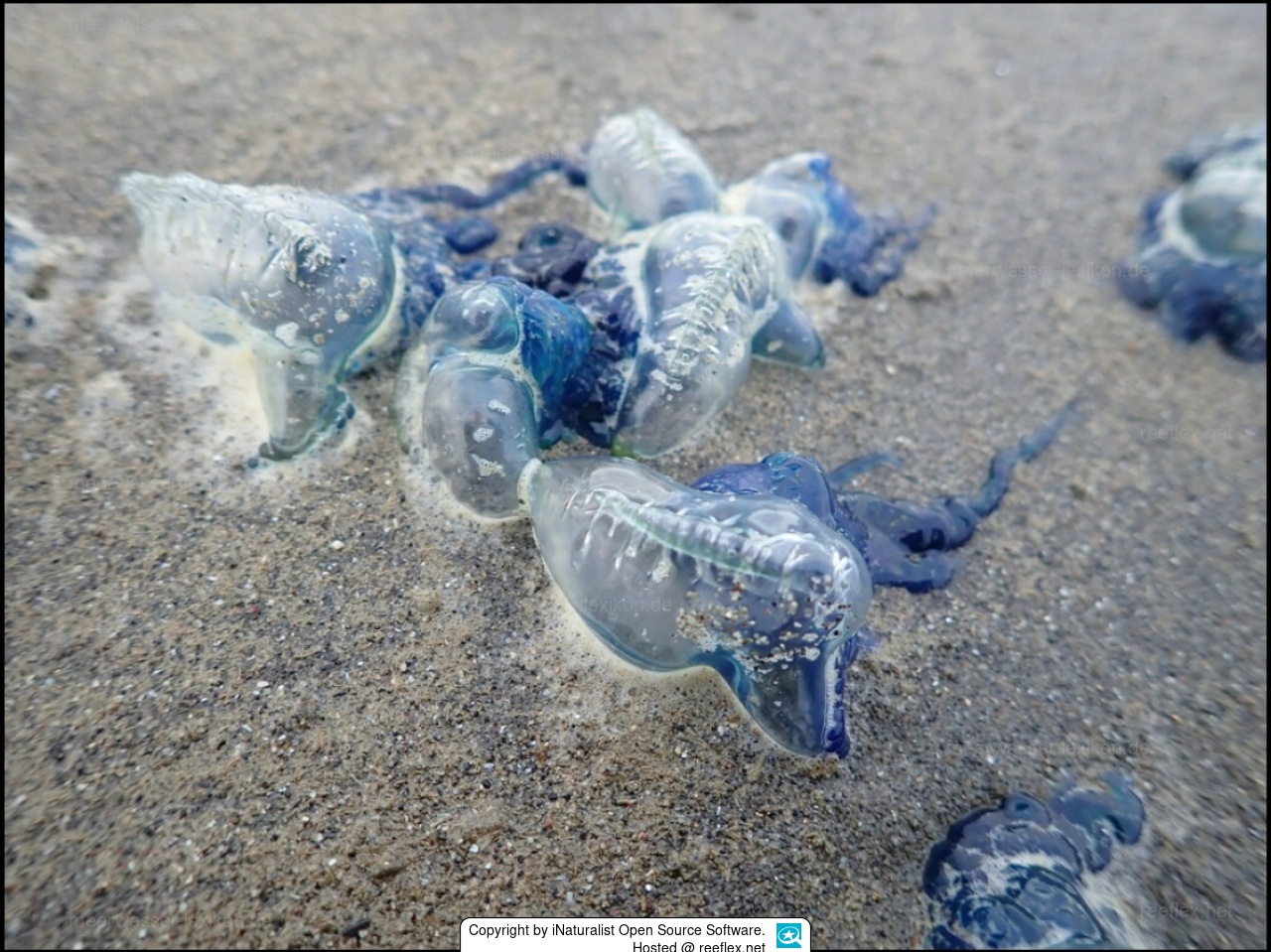Info
Recent scientific research conducted by researchers at Yale University and Australian researchers at UNSW and Griffith University in 2025 confirmed the existence of three additional species of Portuguese man-of-war through genetic testing/sequencing of the genomes of 151 Physalia specimens from around the world.
Until now, scientists had assumed that the Portuguese man-of-war (Physalia physalis) was the only species of the genus.
Physalia minuta is significantly smaller than the well-known Portuguese man-of-war Physalia physalis
The two confirmed species and the new species are:
Physalia minuta
Physalia minuta
Physalia utriculus
With the Portuguese man-of-war (Physalia physalis), there are now four known species of Portuguese man-of-war in the Physalia genus.
The three new species are believed to be venomous, but the potency of their venom is not yet known.
Information on the biology of the species is currently lacking, but Slat will be the subject of further scientific research in the future, so we will continue to add to the information available.
Etymology: The species name “minuta” refers to the small size of the mature colony.
Basic information about Portuguese man-of-war:
The Portuguese man-of-war Physalia minuta is a cnidarian (Cnidaria) belonging to the hydrozoans.
Sail jellyfish cannot actively move themselves, but are driven by the wind. The hydrozoan polyps form animal colonies that look like small rafts with sails.
During storms, they can be washed ashore in large numbers. They feed on small planktonic organisms.
Until now, scientists had assumed that the Portuguese man-of-war (Physalia physalis) was the only species of the genus.
Physalia minuta is significantly smaller than the well-known Portuguese man-of-war Physalia physalis
The two confirmed species and the new species are:
Physalia minuta
Physalia minuta
Physalia utriculus
With the Portuguese man-of-war (Physalia physalis), there are now four known species of Portuguese man-of-war in the Physalia genus.
The three new species are believed to be venomous, but the potency of their venom is not yet known.
Information on the biology of the species is currently lacking, but Slat will be the subject of further scientific research in the future, so we will continue to add to the information available.
Etymology: The species name “minuta” refers to the small size of the mature colony.
Basic information about Portuguese man-of-war:
The Portuguese man-of-war Physalia minuta is a cnidarian (Cnidaria) belonging to the hydrozoans.
Sail jellyfish cannot actively move themselves, but are driven by the wind. The hydrozoan polyps form animal colonies that look like small rafts with sails.
During storms, they can be washed ashore in large numbers. They feed on small planktonic organisms.







 iNaturalist Open Source Software
iNaturalist Open Source Software




